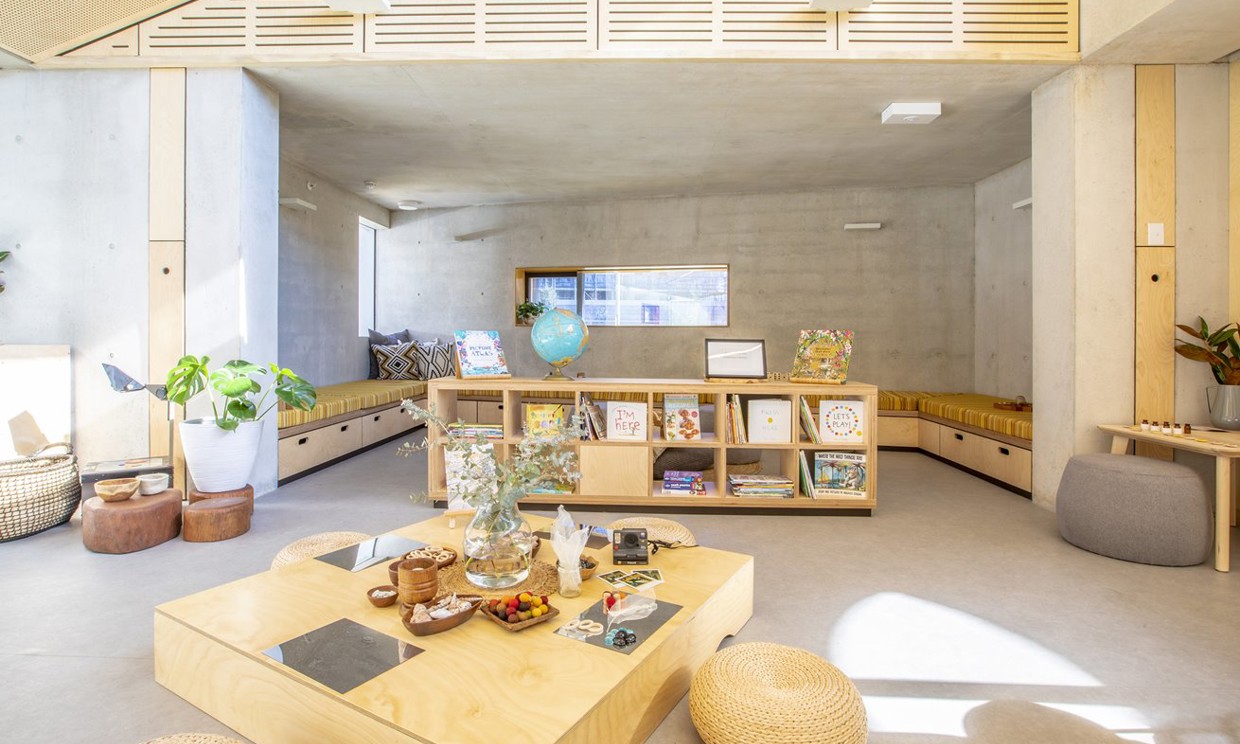Did you know research shows that early learning rooms with less “visual noise” can dramatically improve the behaviour of the young children within them?
Colourful artworks, photographs and signs often decorate the rooms, along with containers of paints, bright blocks and furniture – all of which can be described as visual noise.
But the colours, the noise and the movement can sometimes be more disruptive than beneficial to children.
Goodstart Early Learning general manager pedagogy and practice Sue Robb said the set up of room environments should all be about balance.
“You can eat one piece of chocolate, but not ten pieces of chocolate – that would be overwhelming. The same can be said for early learning environments. A little is good, too much is overwhelming,” Ms Robb said.
“It also depends on the age of the child,” she said. “In the early years it’s nice to have very neutral, calming rooms but as children get a little older, you can add to the room.”
Environments are recognised as being so important to children’s learning, development and wellbeing that in Goodstart Early Learning’s Practice Guide “space” takes up an entire component.
The Practice Guide outlines how environments influence people’s moods and behaviour. It states that well-organised, thoughtful and calm environments can have a long lasting positive effect on children’s ability to tolerate stress and in fact help to diminish stress.
“When the space is cluttered with materials and equipment and there is a visual overload as the result of too many images and primary colours, children will be less likely to deeply engage in play and learning environments,” The Practice Guide states.
Ms Robb agrees, saying “overall, spaces need to be relevant, beautifully presented and well organised. Labelled, organised, literacy and language rich environments are very beneficial for children.”
“We need to be thinking more about the children, but also creating calm environments that don’t overstimulate children,” Ms Robb said.
Tips for designing successful play spaces for your children:
Colourful artworks, photographs and signs often decorate the rooms, along with containers of paints, bright blocks and furniture – all of which can be described as visual noise.
But the colours, the noise and the movement can sometimes be more disruptive than beneficial to children.
Goodstart Early Learning general manager pedagogy and practice Sue Robb said the set up of room environments should all be about balance.
“You can eat one piece of chocolate, but not ten pieces of chocolate – that would be overwhelming. The same can be said for early learning environments. A little is good, too much is overwhelming,” Ms Robb said.
“It also depends on the age of the child,” she said. “In the early years it’s nice to have very neutral, calming rooms but as children get a little older, you can add to the room.”
Environments are recognised as being so important to children’s learning, development and wellbeing that in Goodstart Early Learning’s Practice Guide “space” takes up an entire component.
The Practice Guide outlines how environments influence people’s moods and behaviour. It states that well-organised, thoughtful and calm environments can have a long lasting positive effect on children’s ability to tolerate stress and in fact help to diminish stress.
“When the space is cluttered with materials and equipment and there is a visual overload as the result of too many images and primary colours, children will be less likely to deeply engage in play and learning environments,” The Practice Guide states.
Ms Robb agrees, saying “overall, spaces need to be relevant, beautifully presented and well organised. Labelled, organised, literacy and language rich environments are very beneficial for children.”
“We need to be thinking more about the children, but also creating calm environments that don’t overstimulate children,” Ms Robb said.
Tips for designing successful play spaces for your children:
- COLOUR
- FURNISHINGS
- NATURAL LIGHT
- ORGANISATION


